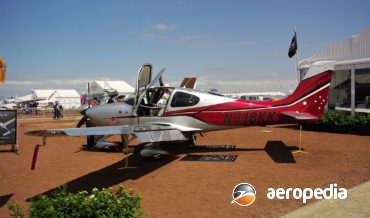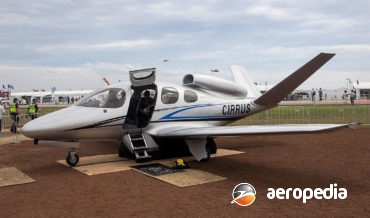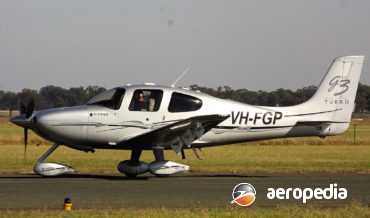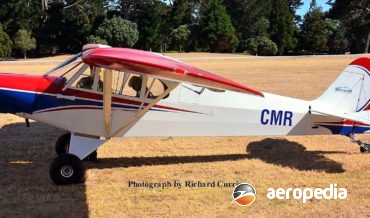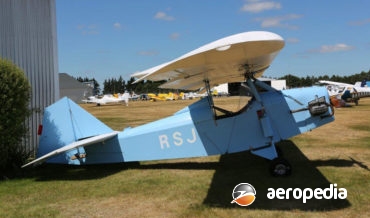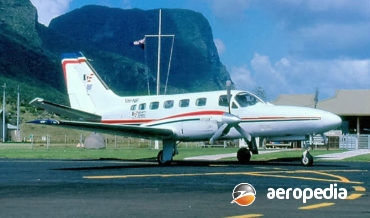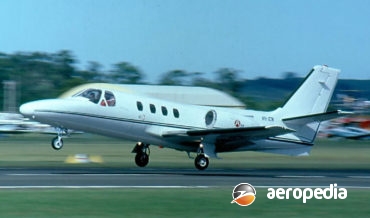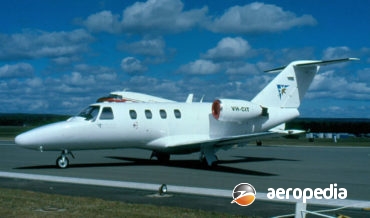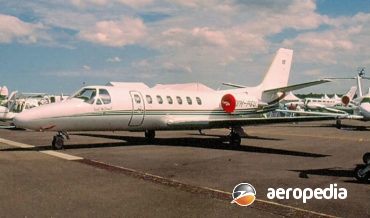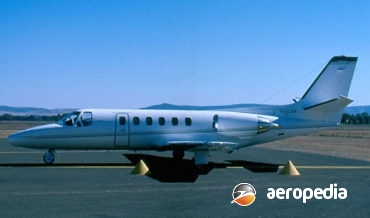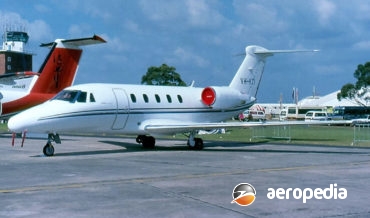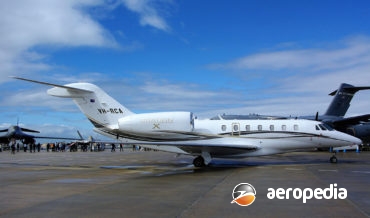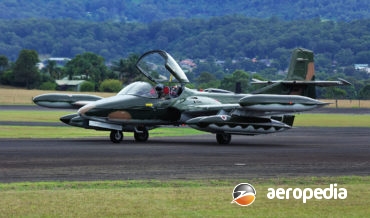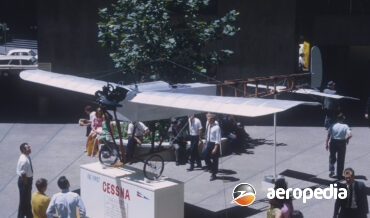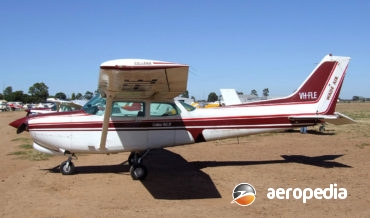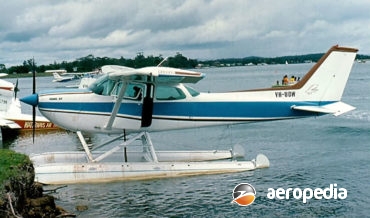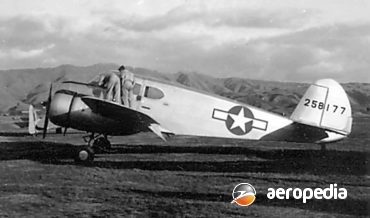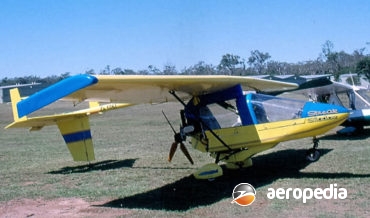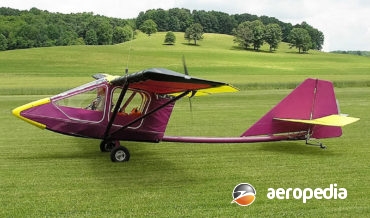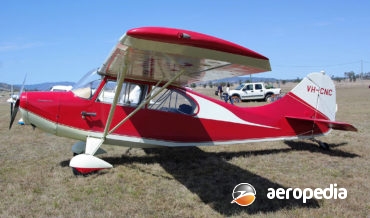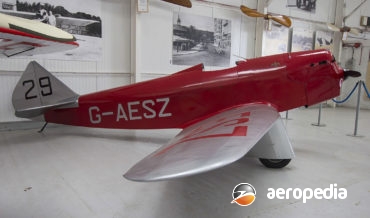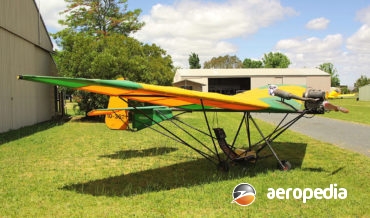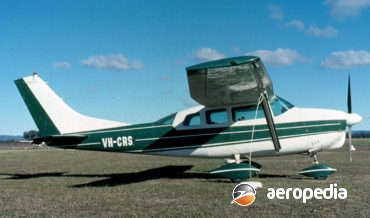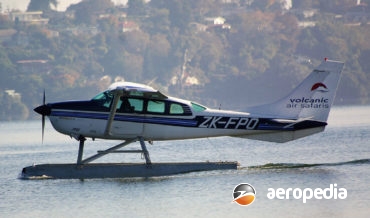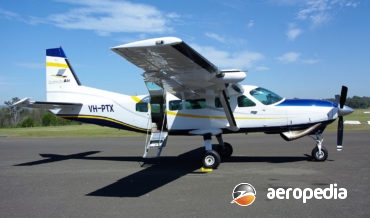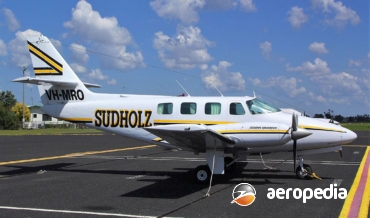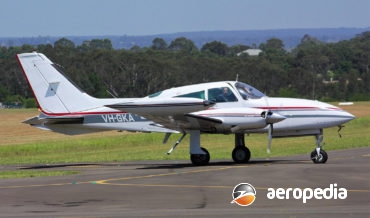David C. Eyre
On 24 February 2015 Cirrus Aircraft launched a variant of the SR22 specifically tailored to Australian conditions. Called the Australis the first example of the aircraft (N318KK) flew into Australia in mid-February 2015 and was placed on display at the Australian International Airshow at Avalon.
David C. Eyre
- May 17, 2019
This is one of a number of very-light private jet aircraft offered on the world market and is a seven-seat composite design with a single Williams FJ33-4 turbofan mounted above the cabin and exhausting between the V-shaped tail.
David C. Eyre
- May 17, 2019
The Cirrus SR-20 was developed by the Cirrus Design Corporation in Minnesota and is a all-composite design with a fixed undercarriage seating four with a 149-kw (200-hp) Teledyne Continental IO-360 engine and is manufactured at the company’s facility at Grand forks, North Dakota.
David C. Eyre
- May 17, 2019
Following the success of the SR-20 series, Cirrus developed the larger and more powerful SR-22 series, the first of which was shown at the United States Aircraft Owners and Pilots Association meeting in Florida in 2000.
David C. Eyre
- May 17, 2019
The Skybaby is a single-seat parasol wing homebuilt aircraft which was designed by the Clancy Brothers (William, Jack and Alan) at Rosebery in Sydney.
David C. Eyre
- May 17, 2019
The Cadi, as it was initially known, was a light aircraft designed in about 1994 in Canada by Jean Eudes Polvin. In 1998 a company, Canadian Light Aircraft Sales & Service (CLASS) was formed in Quebec and obtained manufacturing rights to the aircraft, the name being changed to BushCaddy.
David C. Eyre
- May 17, 2019
The CubFlyer was designed by Malcolm Savill of Classic Aviation Designs in Hamilton, NZ. The idea was to have students at the Otamatea High School build an aircraft and in 2002 work commenced on the construction of a Light Miniature Aircraft LM-5X-W and this aircraft was completed on 9 April
David C. Eyre
- May 17, 2019
Due to the interest in 1930’s vintage aircraft, and the lack of an adequate supply of survivors, a replica of the 1930s era Waco YMF biplane has been developed and built by the Classic Aircraft Corp at Battle Creek, Lansing, Michigan.
David C. Eyre
- May 17, 2019
The Jenny is a two-thirds scale (67%) replica of the Curtiss JN4D Jenny of the 1920s and is a single-seat ultra light of biplane configuration. Although the design appears to have a second cockpit, this is non functional. The airframe is gusset riveted aluminium tubing with dacron covering.
David C. Eyre
- May 17, 2019
The Fred was designed by Eric Clutton in the United Kingdom as a single-seat light parasol-wing aircraft for amateur construction. The name “Fred” stands for “flying runabout, experimental design”.
David C. Eyre
- May 17, 2019
The Cozy was designed by Nathan Puffer in 1980 as a two-seat side-by-side development of the Rutan Long Ez, the first flight of the type taking place on 19 July 1982.
David C. Eyre
- May 17, 2019
The first turboprop business aircraft added to the Cessna range, the Conquest was designed as an intermediate-sized aircraft between the company’s piston-engine twins and the turbofan-power Citation series. The prototype flew for the first time on 26 August 1975, and the first production machine was delivered on 24 September 1977.
David C. Eyre
- May 17, 2019
On 7 October 1968 Cessna unveiled a full-scale mock-up of a new eight-seat pressurised executive jet aircraft, known as the Fanjet 500 to delegates at that years National business Aircraft Association convention at Houston, Texas. The aircraft was designed to operated from most airfields used by light and medium twin-engined
David C. Eyre
- May 17, 2019
The Cessna 525 CitationJet was announced at the National Business Jet Association convention in 1989 as the company’s replacement for the Cessna 500 Citation and Citation I series and the first flight of the prototype (N525CJ) was made on 29 April 1991, the second prototype flying on 20 November that
David C. Eyre
- May 17, 2019
The Cessna 560 Citation series was introduced to the Cessna range at the BBAA convention in New Orleans in 1987, theprototype Citation V (N560CC) flying in August that year. The largest of the straight wing members of the Citation series, it has been produced in three models, the Citation
David C. Eyre
- May 17, 2019
Continued development by Cessna produced the Citation II, which was larger, faster, climbed more quickly, cruised at higher altitudes, and ranged further than earlier Citation models.
David C. Eyre
- May 17, 2019
Although receiving the designation “Citation” in the Cessna corporate jet series, the Citation II was a completely new design which had no commonality with the earlier series,
David C. Eyre
- May 17, 2019
The Cessna Sovereign was designed as a mid-size corporate business aircraft aimed at replacing aircraft such as the Falcon 10, Westwind and Sabreliner in the market.
David C. Eyre
- May 17, 2019
The Cessna 750 Citation X series was announced in October 1990, at the US NBAA annual conference, testing of the engine taking place initially on a citation VII testbed (N650) in August 1992.
David C. Eyre
- May 17, 2019
In 1953 the Cessna with its Model 318 won a design competition for production of a two-seat side-by-side jet trainer for the USAF powered by two Continental J-69 engines, these being Americanised versions of the French Turbomeca Marbore. Two prototypes were built with the designation XT-37, the first flying
David C. Eyre
- May 17, 2019
The first Cessna Model C-34 was completed in June 1935 at Cessna’s Wichita, Kansas, plant, and shortly thereafter it was entered in the All Kansas Tour (1,609 km -1,000mile) when it easily won a 40 km (25 miles) free-for-all race. Fitted with a Warner Super Scarab engine, the Model
David C. Eyre
- May 17, 2019
The Cessna C165 was a development of the earlier Models C-37 and C-38 produced by the Cessna Aircraft Co at its Wichita, Kansas facility shortly before the commencement of World War I. It was the culmination of the development of the Super Scarab powered series, and was a stylish, clean,
David C. Eyre
- May 17, 2019
In 1911 Clyde Cessna, a skilled automotive engineer, journeyed to New York where he bought an engineless Bleriot monoplane from the Queens Airplane Company (New York) licensee for the Bleriot company. Into this he installed a 45-kw (60-hp) four cylinder liquid-cooled Elbridge engine in his home state of Oklahoma, but
David C. Eyre
- May 17, 2019
The Cutlass RG was introduced to the Cessna range in late 1979 (although described as a new model for 1980) as a variant of the Model 172 Skyhawk with a retractable undercarriage, in order to compete with the very successful Piper Cherokee Arrow, a variant of the Cherokee with a
David C. Eyre
- May 17, 2019
The Hawk XP was designed and developed to meet customer demand for a more powerful version of the Model 172 Skyhawk. Introduced into the Cessna range during 1977, the Hawk XP offered a higher performance with considerably more power, but still remained moderately priced on the market.
David C. Eyre
- May 17, 2019
Affectionately known as the Bamboo Bomber, cloth moth, and double breasted Stearman, the Cessna Bobcat, known as the Crane in RCAF service, was built by the Cessna Aircraft Company at Wichita, Kansas, some 5,402 examples being completed.
David C. Eyre
- May 17, 2019
The Streak and Shadow light aircraft were produced by the Cook Flying Machine Company (CFM) in the United Kingdom and have been a sales success, with examples sold to more than 36 countries around the world, including New Zealand and Australia.
David C. Eyre
- May 17, 2019
The Hawk series of light aircraft was designed by CGS Aviation Inc of Broadview Heights, Ohio, formerly Chuck’s Glider Supplies, the first machine being made available in 1980, as a single-seat light sporting aircraft which could be made available in kit form.
David C. Eyre
- May 17, 2019
The Champion series of aircraft was introduced in 1946 by the Aeronca Manufacturing Corporation and subsequently it and a number of other manufacturers developed the design in various models, with various power plants.
David C. Eyre
- May 17, 2019
One of the earliest homebuilts, the DW-1 was designed by Messrs Dalrymple and Ward in 1937 as an easy to build and operate light aircraft with good performance.
David C. Eyre
- May 17, 2019
The Weedhopper was a high-wing ultralight aircraft fitted with an engine in the tractor configuration, a tricycle undercarriage, and with two-axis control. It was initially developed by John Chota in the late 1970s during the boom in ultralight aircraft and was introduced to the market in 1977.
David C. Eyre
- May 17, 2019
Design of the Cessna 188 series of agricultural aircraft began following a world market research and engineering survey of agricultural operators around the world by Cessna.
David C. Eyre
- May 17, 2019
The Cessna 190 and 195 series of aircraft was a large, very comfortable, five-seat cantilever, high-wing monoplane produced by the Cessna Aircraft Company in the USA between 1947
David C. Eyre
- May 17, 2019
The Model 205 was introduced into the Cessna range in August 1962 as a utility transport to suit operators which required a larger aircraft than the Model 185 Skywagon.
David C. Eyre
- May 17, 2019
The Cessna 205 was a derivative of the Model 210 fitted with a fixed undercarriage and increased passengercapacity.
David C. Eyre
- May 17, 2019
Basically the Cessna 207 was a lengthened development of the Cessna 206 designed to improve load-carrying capability whilst retaining the operating economics of that aircraft.
David C. Eyre
- May 17, 2019
The Cessna Caravan I was a completely new utility transport designed by the Cessna Company, and was the largest single-engine aircraft in the company’s line.
David C. Eyre
- May 17, 2019
The Model 210 was introduced to the Cessna range in 1959 as an intermediate model between the 182 and the twin-engine 310
David C. Eyre
- May 17, 2019
On 14 February 1978 Cessna flew a new light-weight twin-engined series of aircraft knownas the Model 303.
David C. Eyre
- May 17, 2019
Production deliveries of the Cessna 310 series of light, twin-engine, executive aircraft commenced in 1954 from the Cessna Aircraft co plant at Wichita, Kansas,
David C. Eyre
- May 17, 2019
Recent Comments
Archives
Categories
- No categories
Categories
- No categories
Latest Posts
Newsletter

